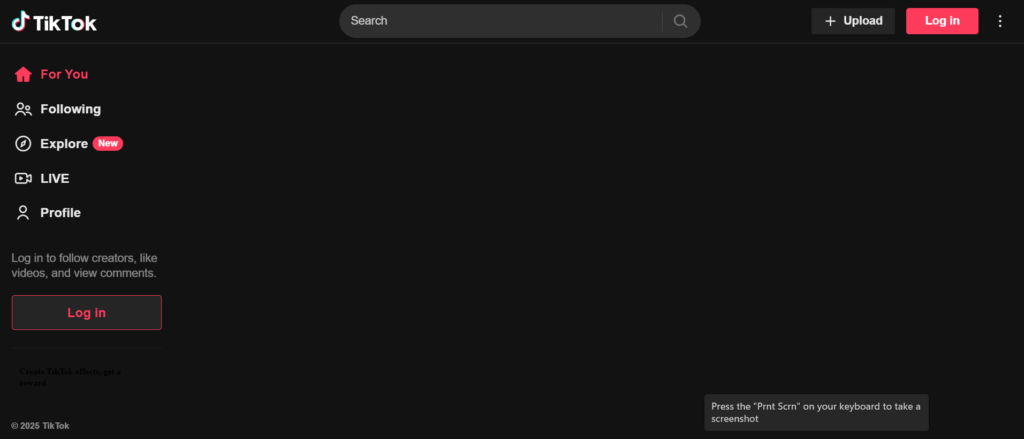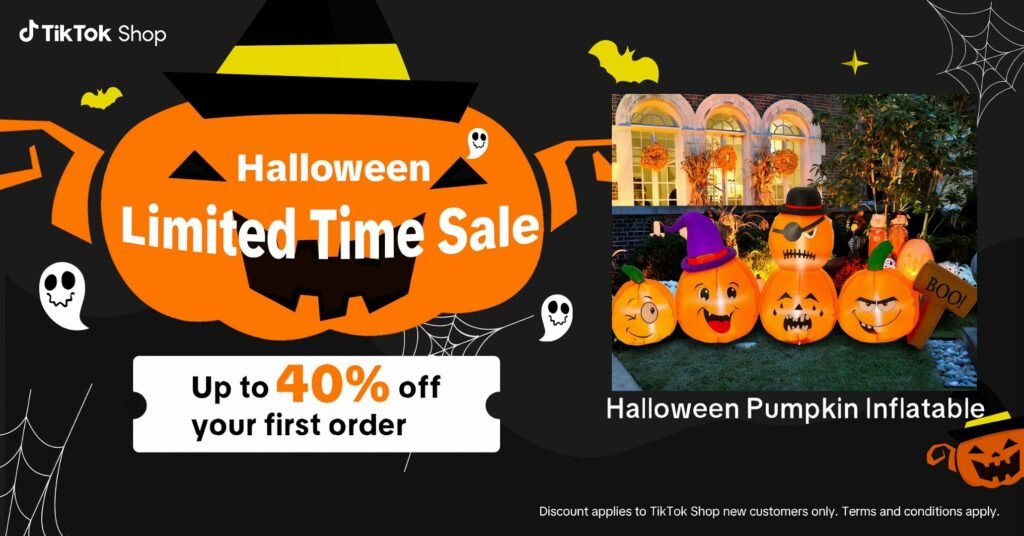User Base and Demographics
TikTok has quickly grown into one of the largest social media platforms in the world, with over 1 billion active users globally. The app’s user base spans across all age groups, but it’s especially popular among Gen Z and Millennials. According to recent statistics, over 60% of TikTok users are under the age of 30, making it a prime platform for brands targeting younger audiences.
TikTok’s appeal isn’t limited by geography. It has a strong global presence, with high user engagement in countries like the United States, Indonesia, Brazil, and the United Kingdom. In fact, TikTok is available in over 150 countries and supports 75+ languages, making it a truly international platform.
Another unique aspect of TikTok is its inclusive and diverse user community. The platform encourages creativity and authenticity, which has helped it attract users from various cultural, social, and economic backgrounds. This diversity makes TikTok a powerful tool for global brands aiming to reach different audience segments with localized content.
Content Creation Tools
One of TikTok’s biggest strengths lies in its powerful and user-friendly content creation tools. These built-in features allow creators of all skill levels to easily produce high-quality, engaging videos without needing external editing software.
TikTok’s video editor includes features such as:
- Filters and Effects: From color grading to augmented reality (AR), TikTok offers a wide variety of effects that help enhance video quality and creativity.
- Music Library: TikTok’s vast licensed music library allows users to add trending songs and sound effects that often go viral.
- Voiceovers and Text-to-Speech: Creators can add narration or use the built-in text-to-speech tool to make their content more engaging and accessible.
- Templates: Users can choose from a range of video templates to quickly create trendy content, perfect for challenges, storytelling, or product showcases.
- Stitch and Duet Features: These allow users to collaborate with or respond to other videos, fueling interaction and content remixing.
For creators and brands, TikTok also provides tools like the TikTok Creative Center, which helps generate ideas based on current trends, and the CapCut app, an official video editing tool that integrates seamlessly with TikTok.

Algorithm and Personalization
One of the main reasons for TikTok’s explosive growth is its highly advanced algorithm and personalization system. Unlike traditional social media platforms where users primarily see content from accounts they follow, TikTok focuses on showing content you’ll love — whether or not you follow the creator.
When you open the app, TikTok’s “For You Page” (FYP) instantly begins suggesting videos tailored to your interests. This is powered by a complex algorithm that considers:
- User Interactions: Likes, shares, comments, video completions, and even replays help TikTok understand what content you enjoy.
- Video Information: Captions, sounds, hashtags, and video content are analyzed to recommend similar videos.
- Device and Account Settings: Language preference, device type, and location also help personalize content (without being tied to sensitive data).
What makes TikTok’s algorithm unique is how quickly it adapts. Even if you’re a brand-new user, the platform can begin recommending relevant content within minutes of interaction. This hyper-personalized experience keeps users engaged and encourages them to spend more time on the app.
For creators and marketers, understanding how the TikTok algorithm works is crucial. Using trending audio, relevant hashtags, and engaging visuals can significantly increase the chances of landing on the FYP — and going viral.

Monetization Opportunities on TikTok
TikTok is not only a platform for creative expression but also offers a variety of monetization opportunities for both individual creators and businesses. As TikTok’s user base continues to grow, so do the ways in which creators can generate income through their content. Whether you are an influencer, a brand, or a small business, there are several ways to monetize on TikTok.
1. TikTok Creator Fund
The TikTok Creator Fund allows creators to earn money based on the engagement and views their videos receive. To qualify, creators must meet certain criteria, including having a minimum number of followers and video views. Once approved, creators are paid per video based on their content’s performance.
2. Brand Partnerships and Sponsored Content
One of the most lucrative monetization opportunities on TikTok is partnering with brands for sponsored content. Brands are constantly looking for influencers and creators who can authentically promote their products or services. Sponsored posts typically involve showcasing a product, offering a review, or creating unique content around the brand. TikTok’s algorithm helps creators reach a large audience, making it an attractive platform for companies looking to collaborate.
3. TikTok Live Gifts
Creators can also earn money during TikTok Live broadcasts through virtual gifts. Fans can purchase gifts using TikTok’s in-app currency and send them to creators during live streams. These gifts can be converted into actual money, providing an additional revenue stream for creators.
4. Affiliate Marketing
Affiliate marketing on TikTok is another way for creators to earn money. By sharing affiliate links or discount codes, creators can earn commissions when their followers make purchases through those links. TikTok’s seamless integration with e-commerce platforms makes it easy for creators to promote affiliate products in their videos.
5. Selling Products Directly
TikTok’s integration with TikTok Shop allows creators and businesses to sell products directly on the platform. Creators can set up a shop, add product links to their videos, and drive traffic directly to their e-commerce store. This shoppable content not only makes it easy for creators to monetize their following but also helps brands connect with their audience in a more personalized way.
6. TikTok Ads and Branded Hashtags
For businesses, TikTok ads and branded hashtag challenges offer a great way to reach potential customers. By creating fun and engaging ad content or a branded challenge, businesses can encourage users to participate and promote the product. TikTok’s unique advertising format is designed to feel native to the platform, ensuring higher engagement rates.
In summary, TikTok has transformed from a simple entertainment app to a powerful platform offering multiple monetization opportunities. Whether you’re a creator looking to earn from your content or a brand seeking new ways to engage with your audience, TikTok provides a wide range of income-generating options that cater to all types of users.

Influencer Marketing Potential on TikTok
TikTok has become one of the leading platforms for influencer marketing, thanks to its massive reach and highly engaged user base. With millions of active users spending hours on the app each day, TikTok provides an ideal environment for brands to collaborate with influencers and drive meaningful results. Let’s explore the influencer marketing potential on TikTok and how businesses can leverage it effectively.
1. Highly Engaged Audience
The core of TikTok’s success lies in its incredibly engaged audience. Users are not just passive viewers—they are active participants who engage with content through likes, comments, shares, and challenges. This level of engagement creates a unique opportunity for influencer marketing to thrive, as influencers can tap into a highly active community that is more likely to interact with branded content.
2. TikTok’s Viral Nature
One of the most powerful aspects of TikTok is its ability to make content go viral. Due to its algorithm and the way content is shared, videos can quickly gain traction and reach millions of users in a short amount of time. Influencers on TikTok have the ability to create viral content that can amplify brand messages to a global audience, creating significant exposure and increasing the likelihood of conversions.
3. Authentic Content and Relatable Influencers
Unlike traditional advertising, TikTok influencers create content that feels authentic and organic. The platform’s focus on creativity and fun allows influencers to integrate products or services seamlessly into their videos without seeming overly promotional. This level of authenticity helps brands build trust with their audience, as users are more likely to engage with content that feels genuine and relatable.
4. Diverse Influencer Pool
TikTok’s user base spans a wide range of demographics, including teenagers, young adults, and even older generations. This diversity means that brands can collaborate with influencers from various niches, including fashion, beauty, fitness, tech, food, and more. Whether you’re targeting Gen Z or millennials, TikTok’s influencer marketing potential is vast, making it easy for businesses to find the perfect influencer to promote their products or services.
5. Cost-Effective Advertising
In comparison to traditional forms of advertising, TikTok influencer marketing can be more cost-effective, especially for brands that are just starting out. Influencers with smaller followings, often referred to as “micro-influencers,” can still drive high engagement rates at a fraction of the cost of major celebrities or influencers with millions of followers. For businesses on a budget, this provides an excellent opportunity to tap into TikTok’s influencer marketing without breaking the bank.
6. Measurable Results
With TikTok’s robust analytics tools, businesses can easily track the performance of their influencer campaigns. Metrics like video views, likes, shares, comments, and click-through rates allow brands to measure the impact of their influencer partnerships and optimize their campaigns for better results. The transparency and access to data make it easier for businesses to assess ROI and refine future marketing strategies.
Where to add images:
- A chart showing TikTok’s user engagement vs other social platforms
- A screenshot of a popular influencer’s video promoting a product
- A graph comparing influencer marketing costs on TikTok vs traditional advertising
- A flowchart showing how influencer marketing leads to increased conversions
In conclusion, TikTok’s influencer marketing potential is unmatched by many other platforms. With its large, engaged, and diverse audience, TikTok allows brands to connect with consumers in a fun, authentic, and impactful way. By leveraging the power of TikTok influencers, businesses can boost brand visibility, drive engagement, and ultimately increase sales.
Data Privacy and Security on TikTok
TikTok has grown to be one of the most popular social media platforms globally, but with its rapid rise, questions surrounding data privacy and security have become a significant concern. Users and businesses alike are looking for assurance that their personal data, content, and activities on the app are secure. In this section, we will discuss how TikTok handles data privacy and security and the steps users can take to protect themselves.
1. TikTok’s Data Collection Practices
As with any social media platform, TikTok collects user data to personalize content, improve user experience, and serve targeted ads. The data collected can include information such as:
- Device Information: Details about the device being used, including IP address, operating system, and device model.
- User Activity: How often users interact with content, which content they engage with, and how long they spend watching videos.
- Location Data: GPS data or location information provided by users’ devices.
This data is used to fuel the platform’s algorithm, helping to deliver relevant content to users. However, it also raises concerns about how securely this data is stored and shared.
2. TikTok’s Privacy Policy
TikTok has implemented several measures to ensure that user data is handled responsibly and transparently. The platform’s privacy policy outlines how user data is collected, stored, and used, as well as the steps taken to safeguard privacy. This includes:
- Data Encryption: TikTok uses encryption to protect user data both during transmission and when stored on its servers.
- Data Retention: The platform retains user data only for as long as necessary to provide its services, and users can request data deletion.
- Third-Party Sharing: TikTok shares user data with third-party partners for purposes such as targeted advertising, but users can control some of these settings via their privacy options.
3. User Control and Privacy Settings
TikTok provides users with several tools to control their privacy and security:
- Privacy Settings: Users can customize their privacy settings to restrict who can view their videos, comment on posts, or send them messages.
- Two-Factor Authentication: To enhance account security, TikTok offers two-factor authentication, requiring users to enter a code sent to their phone when logging in from a new device.
- Data Access and Deletion: Users can access their data through the app’s settings and request deletion of their account or specific data.
Despite these controls, it is crucial for users to be proactive in reviewing and adjusting their privacy settings to reduce the risk of unwanted data exposure.
4. Third-Party Risks and Data Sharing
One of the key concerns with TikTok is the possibility of data being shared with third parties. While TikTok has strict guidelines for data sharing, there is still the potential for data leaks or misuse. Additionally, TikTok’s parent company, ByteDance, is based in China, which has raised concerns about data privacy laws and international data sharing.
To mitigate risks, users should avoid sharing overly personal information and be cautious when granting access to their contacts, location, or other sensitive data.
5. Data Security Measures on TikTok
To ensure that user data is protected, TikTok employs several advanced data security measures:
- Data Encryption: All sensitive data, such as passwords and personal information, is encrypted using robust encryption protocols.
- Regular Audits: TikTok undergoes regular security audits and implements security patches to protect its platform from potential vulnerabilities.
- Compliance with Regulations: TikTok strives to comply with global data protection regulations, such as the General Data Protection Regulation (GDPR) in the European Union, which ensures users’ rights to privacy and data protection.
6. Protecting Your Privacy on TikTok
For users concerned about data privacy and security, there are several best practices to follow:
- Review Privacy Settings Regularly: Ensure that your account settings are configured to restrict access to your content and data.
- Be Careful with Personal Information: Avoid sharing sensitive information, such as your home address, phone number, or financial details, on the platform.
- Use Strong Passwords: Use a combination of upper and lowercase letters, numbers, and symbols for your TikTok password, and enable two-factor authentication for added security.
In Conclusion, TikTok takes data privacy and security seriously by implementing various measures to protect user data. While there are still concerns regarding third-party data sharing and the platform’s international presence, TikTok provides users with tools to control their privacy. By understanding the platform’s privacy settings and following best practices, users can enjoy a safer and more secure experience on TikTok.

